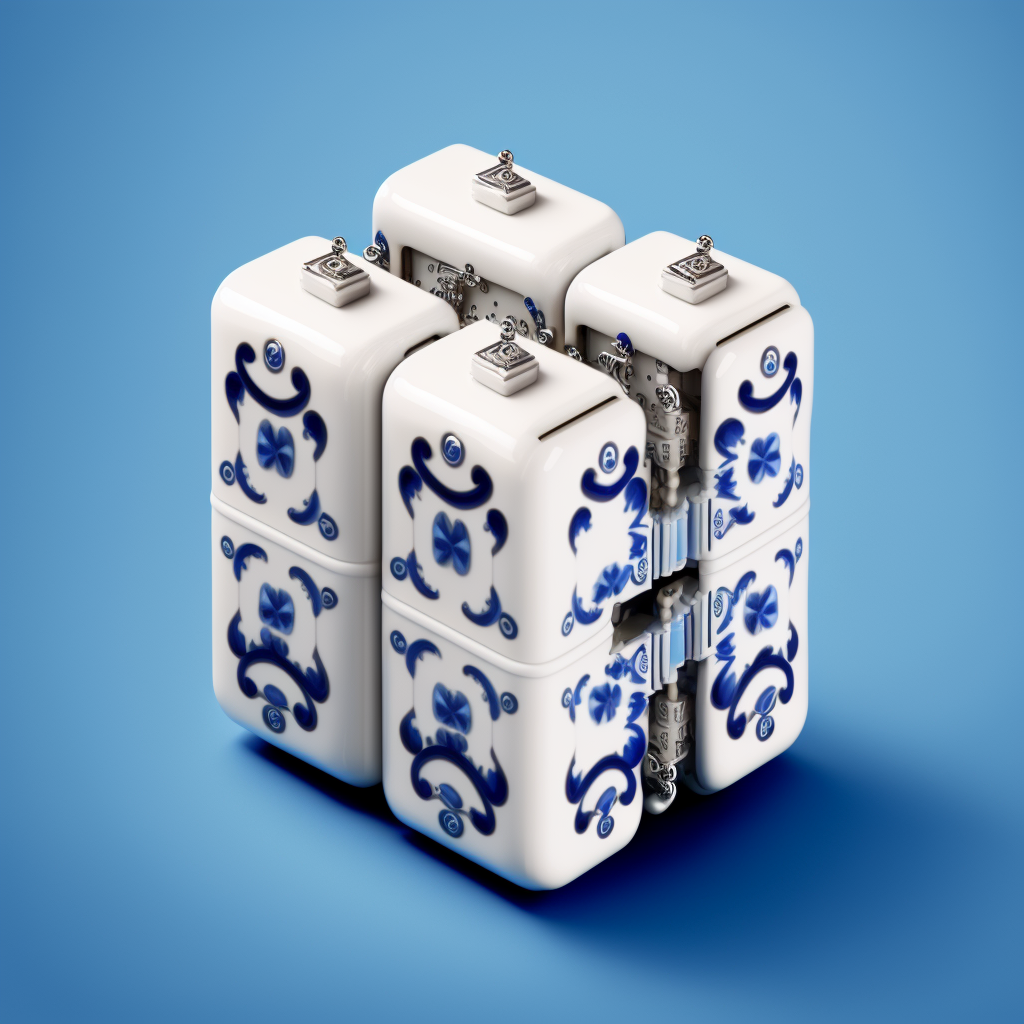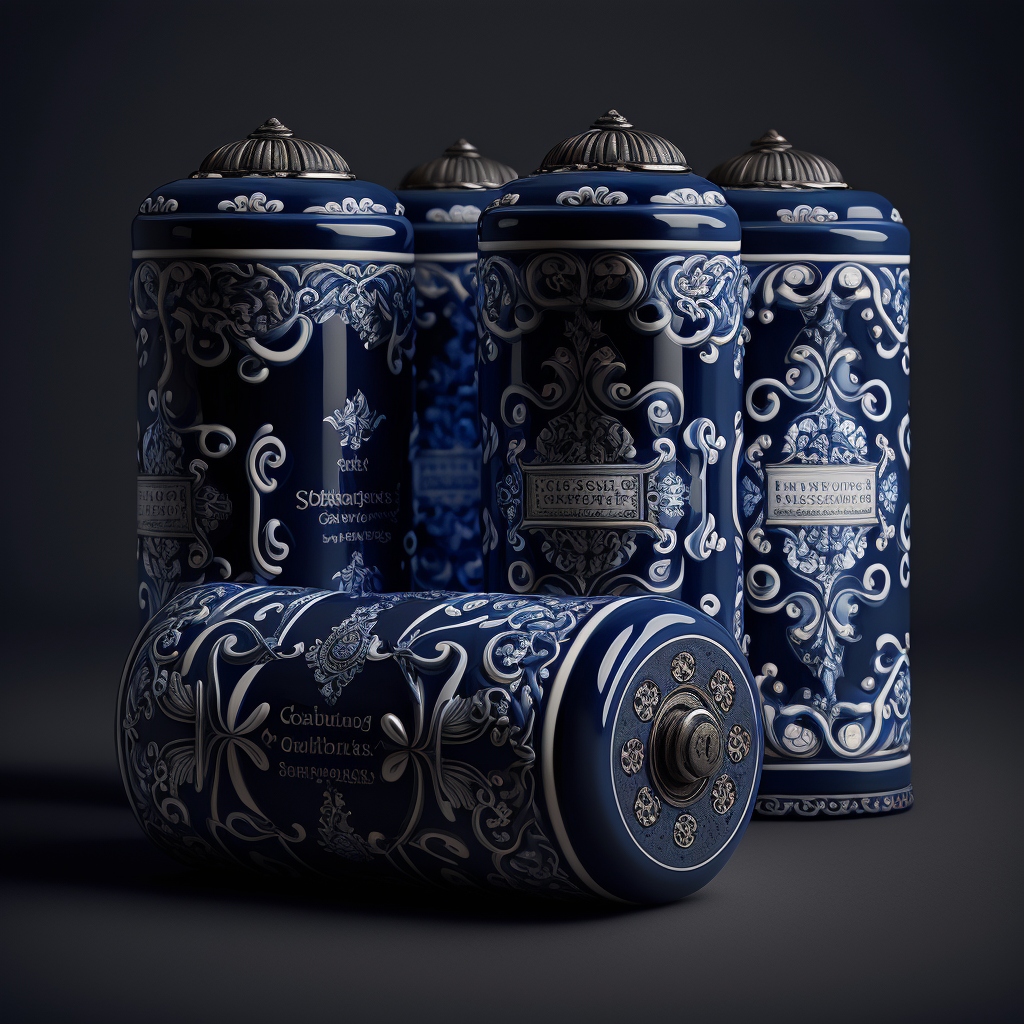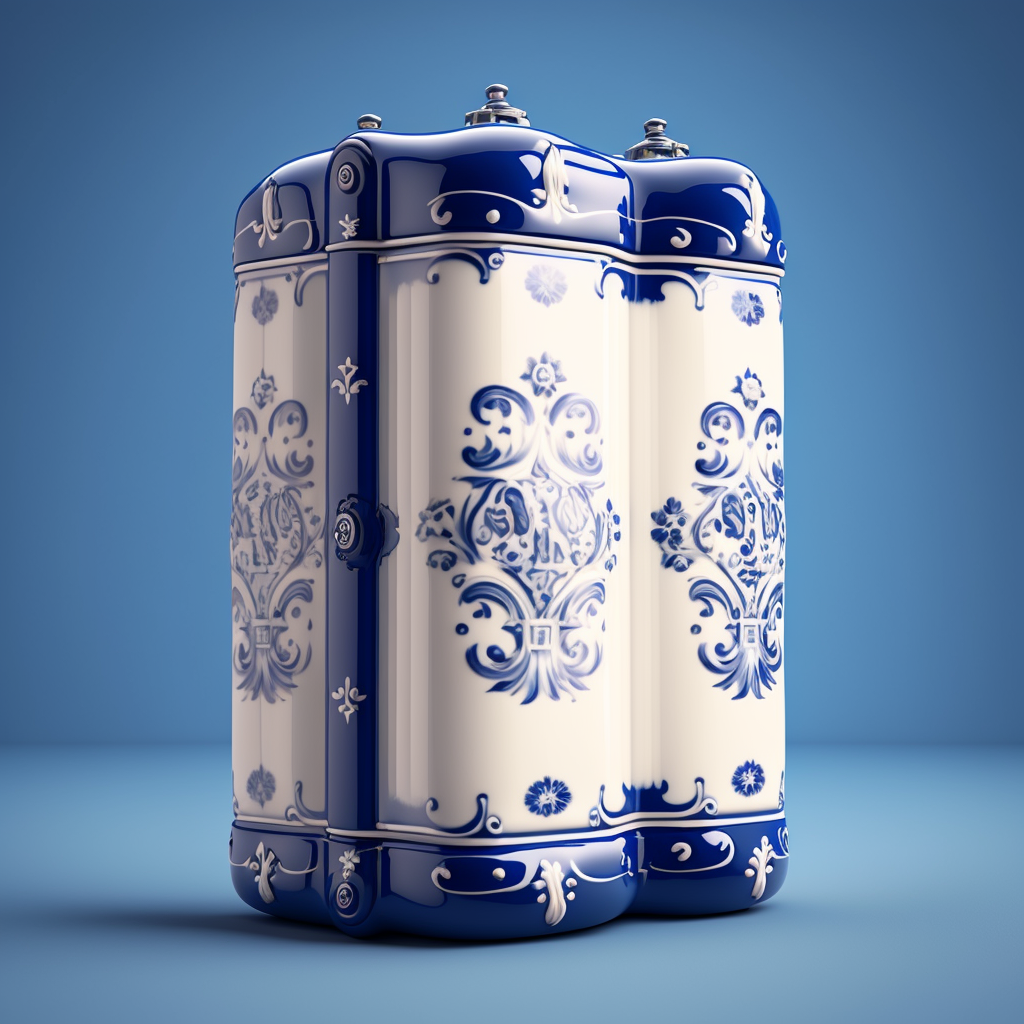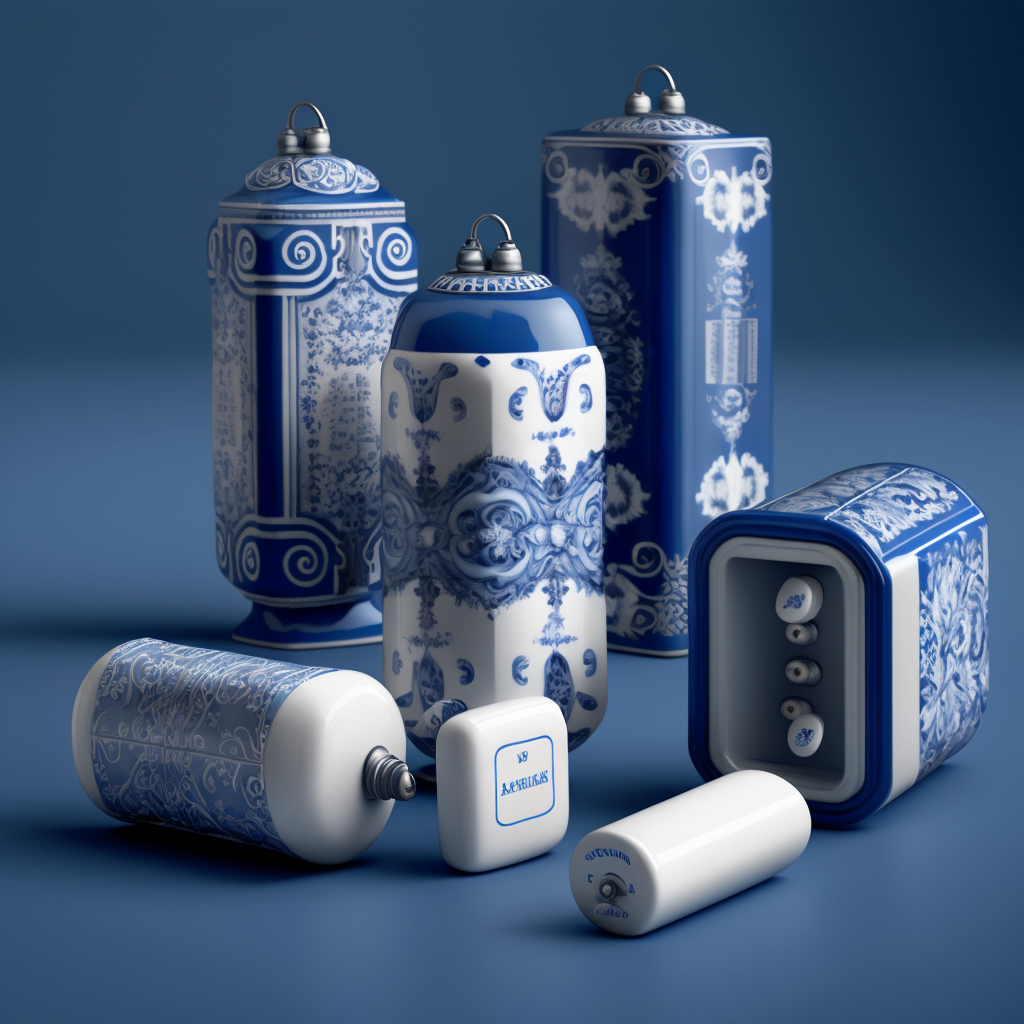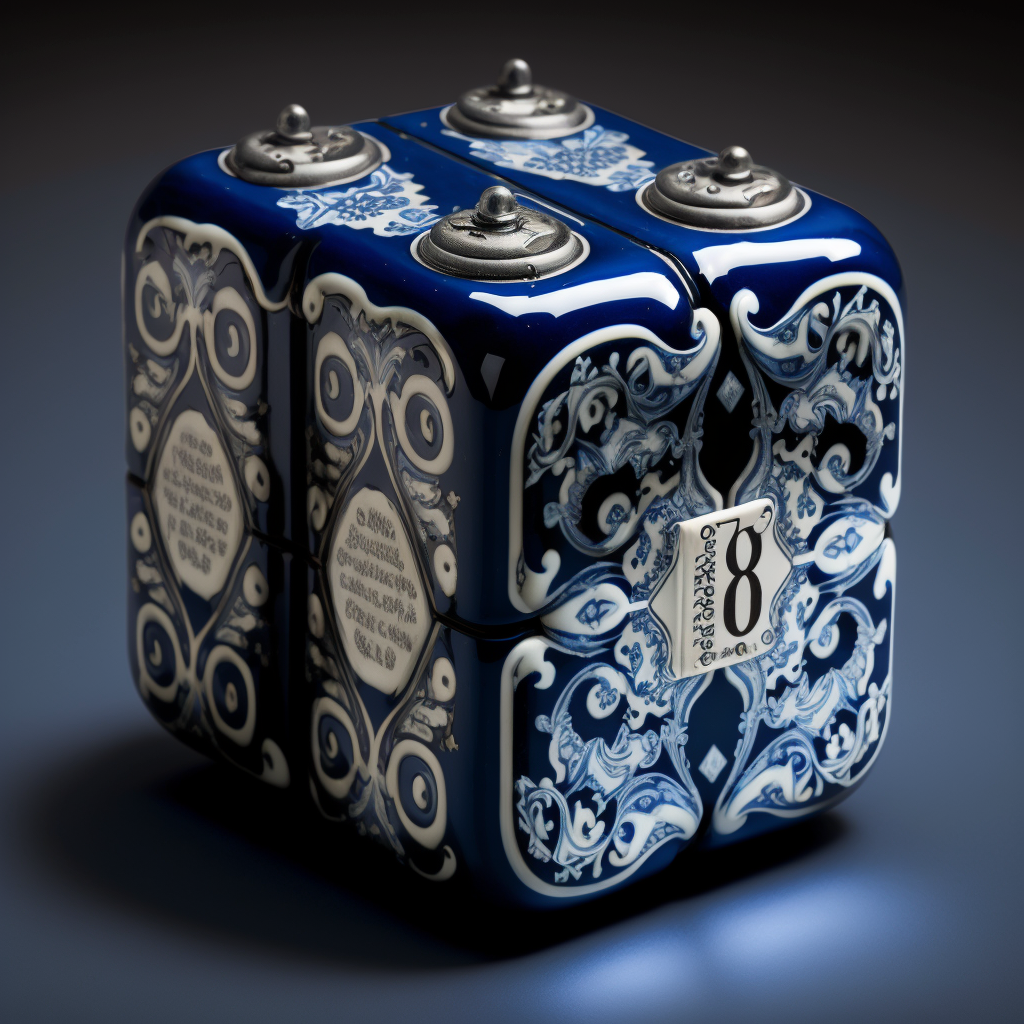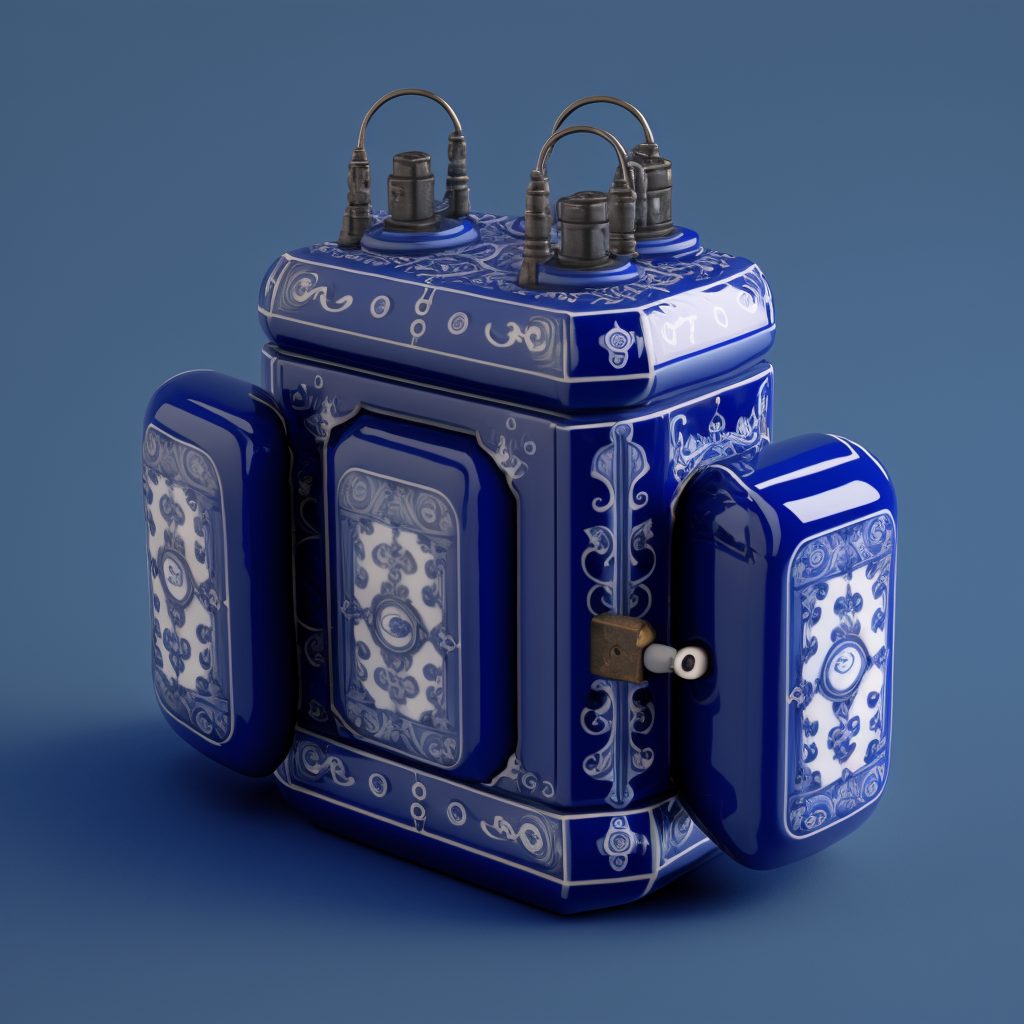← A. Inventions, No. 41
Lodewijk van Amersvoort (1701–1780)
Leyden Jars
1750–60
Fabriek Gerardus Nicolaas Bruyninck van Amersvoort en Zonen, est. 1702, Utrecht, Netherlands. Glazed ceramic housing with tin over glass capsule, water, foil, gutta-percha, wax. 2½ × 2½ × 3¼". Collection of the author.
The original battery was the ‘Leyden Jar,’ an eighteenth century invention by the Dutch scientist Pieter van Musschenbroek of Leiden. These are some of the earliest ones, comparable to our modern nine volt, aa, and six volt lantern batteries. The double ‘+’ markings predate the contemporary practice of using plus and minus to identify the anode and cathode, respectively. Some blame Hamburg’s Great Fire of 1842 on a smoke detector in which the Leyden Jar was installed upside down, and while the story may be apocryphal, this was the year in which markings on batteries were finally standardized, thanks to the initiative of American industrialist Ephraim Chase Eveready.
Published January 20, 2023. Copyright © 2023 Jonathan Hoefler.
About
The objects in the Apocryphal Inventions series are technical chimeras, intentional misdirections coaxed from the generative AI platform Midjourney. Instead of iterating on the system’s early drafts to create ever more accurate renderings of real-world objects, creator Jonathan Hoefler subverted the system to refine and intensify its most intriguing misunderstandings, pushing the software to create beguiling, aestheticized nonsense. Some images have been retouched to make them more plausible; others have been left intact, appearing exactly as generated by the software. The accompanying descriptions, written by the author, offer fictitious backstories rooted in historical fact, which suggest how each of these inventions might have come to be.
These images represent some of AI’s most intriguing answers to confounding questions, an inversion of the more pressing debate in which it is humanity that must confront the difficult and existential questions posed by artificial intelligence.
Previously:
No. 40. Koenig’s Movie System
Next:
No. 42. Clavichordium Circularis



